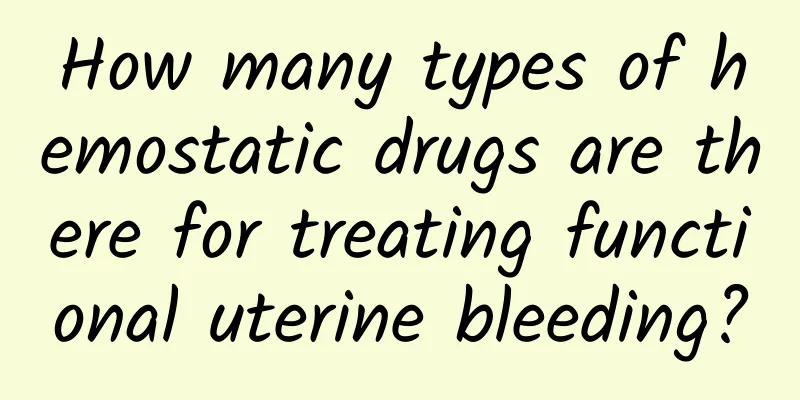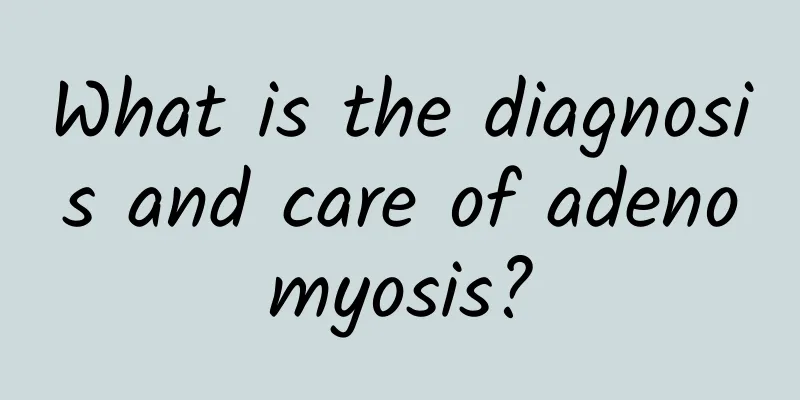How many types of hemostatic drugs are there for treating functional uterine bleeding?

|
Dysfunctional uterine bleeding is mainly manifested by prolonged menstruation and excessive bleeding, which often causes anemia in patients. It can be seen that hemostatic drugs play an extraordinary role in the treatment of functional uterine bleeding. In order to help everyone better understand functional uterine bleeding, we will introduce you in detail several commonly used hemostatic drugs in clinical practice. (1) Progestin-induced anovulatory dysfunctional uterine bleeding is caused by a single androgen stimulation. Progestin supplementation causes the endometrium in the proliferative phase or overproliferative phase to transform into the secretory phase. After drug withdrawal, the endometrium sheds and withdrawal bleeding occurs. Since this type of endometrial shedding is more thorough, it is also called "drug-induced curettage". It is suitable for patients who already have a certain level of estrogen in their bodies. (2) Estrogen application: High doses of estrogen can rapidly increase the estrogen concentration in the blood, promote the growth of the endometrium, repair the wound surface and stop bleeding in a short period of time. It is suitable for those with endogenous estrogen deficiency, mainly for adolescent functional uterine bleeding. (3) Androgens Androgens can reduce the amount of bleeding. However, when bleeding is severe, androgens cannot immediately change the process of endometrial shedding or repair it quickly, so they are not effective when used alone. (4) Combination therapy: Since the hemostatic effect of sex hormone combination therapy is better than that of single drug, when progesterone is used to stop bleeding in adolescent functional uterine bleeding, a small dose of estrogen is also used to overcome the deficiency of single progesterone therapy, reduce the amount of progesterone, and prevent breakthrough bleeding. (5) Non-steroidal anti-inflammatory drugs Many experts believe that dysfunctional uterine bleeding is related to prostaglandin (PG) synthesis. (6) Anti-prostaglandin drugs: Taking prostaglandin synthase inhibitors such as flufenamic acid 200 mg 3 times a day during bleeding can reduce bleeding during endometrial exfoliation. (7) Antifibrinolytic drugs (8) Other hemostatic drugs |
<<: The incidence of dysfunctional uterine bleeding
>>: What are the common complications of functional uterine bleeding?
Recommend
Tips: Several measures to treat pelvic inflammatory disease
With the improvement of medical technology, the t...
Irregular menstruation may also be caused by psychological factors
Irregular menstruation may also be caused by ment...
Nursing record of cervical precancerous lesions
Although milder cervical precancerous lesions are...
Abnormal yellow leucorrhea means pregnancy?
Abnormal yellowing of vaginal discharge does not ...
What is a chocolate cyst?
What is a chocolate cyst? 1. Chocolate cyst is a ...
If there are 4 signs in the female lower body, it means you are old. If not, it means you are still young.
On a sunny morning, the door of the clinic was ge...
What are the main causes of cervical erosion? Summary of the four major causes of cervical erosion
In daily life, more and more women now pay more a...
What are the symptoms of cervical erosion?
What are the symptoms of cervical erosion? Cervic...
Common causes of ectopic pregnancy
There are many symptoms during pregnancy, and ect...
How does Gongjingyankang suppository treat cervical erosion? Methods of traditional Chinese medicine to treat cervical erosion
Cervical erosion is a common disease among women....
Signs of menopause in women
Everyone is no longer unfamiliar with the disease...
Painless abortion
Painless abortion 1. Painless abortion, in layman...
Possible association between physical activity and cardiovascular health in middle age
"Mayo Clinic Proceedings" recently publ...
The causes of uterine adnexitis are generally the following:
Uterine adnexitis is a common type of adnexitis. ...
Can congenital biliary atresia be detected during prenatal examination?
It is usually difficult to detect congenital bili...









